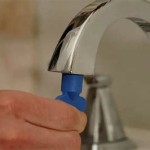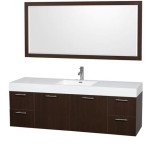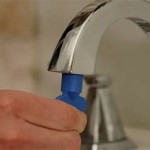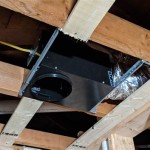Bathroom Sink Drain Pipe Too Short: Understanding and Addressing the Issue
A functioning bathroom sink drain is essential for hygiene and convenience. The drain system, composed of various pipes and fittings, efficiently carries wastewater away from the basin. However, various issues can arise within this system, one of the most common being a drain pipe that is too short. This seemingly minor problem can lead to significant complications, including leaks, water damage, and unpleasant odors.
This article provides a comprehensive overview of the issues associated with a bathroom sink drain pipe being too short. It will cover the identification of the problem, the potential consequences if left unaddressed, and the different methods available for remediation. Furthermore, the article will discuss preventative measures and best practices to ensure a properly functioning and adequately sized drain system.
Recognizing the Problem: Identifying a Short Drain Pipe
Determining if a bathroom sink drain pipe is too short often requires a visual inspection of the plumbing beneath the sink. The drain system typically consists of a P-trap, which is a U-shaped pipe designed to hold water and prevent sewer gases from entering the bathroom. The tailpiece, which connects directly to the sink drain opening, feeds into the P-trap. The outlet of the P-trap then connects to the drain pipe that extends into the wall.
A short drain pipe is characterized by a lack of sufficient length to properly connect the P-trap outlet to the drain line in the wall. This can manifest in several ways: a noticeable gap between the P-trap and the wall drain, a severely angled or strained connection, or an improperly sealed joint. In some cases, the P-trap may be hanging precariously, supported only by the tailpiece, which puts undue stress on the connections.
Furthermore, visual cues such as water stains or dampness around the drain connections, particularly where pipes join, may indicate a short drain pipe that is not making a watertight seal. Any attempt to force the connection or overtighten fittings to compensate for the short pipe can also be a sign of the underlying issue.
Consequences of an Inadequately Sized Drain Pipe
The implications of a bathroom sink drain pipe that is too short extend beyond a simple aesthetic concern. The primary consequence is the increased risk of leaks. When the connection between the P-trap and the wall drain is strained or improperly sealed, water can escape from the joints. These leaks can be small and subtle, often going unnoticed for extended periods, or they can be more significant, resulting in visible water damage.
Chronic leaks, even minor ones, can lead to water damage to the cabinet beneath the sink, causing wood to rot and potentially creating a breeding ground for mold and mildew. Mold growth poses health risks and can necessitate costly remediation. In more severe cases, the water damage can extend to the flooring and surrounding walls, leading to structural problems.
Beyond water damage, a poorly connected drain system can allow sewer gases to escape into the bathroom. These gases contain methane, hydrogen sulfide, and ammonia, among other compounds. Exposure to sewer gases can cause unpleasant odors, headaches, nausea, and dizziness. Prolonged exposure can also pose more serious health risks. The P-trap, when properly connected and filled with water, acts as a barrier to these gases. However, a short drain pipe can compromise the integrity of this seal, allowing gases to escape.
Finally, an inadequately supported drain system, resulting from a short drain pipe, is more susceptible to damage over time. The constant movement of water flowing through the pipes, coupled with the weight of the P-trap, can put stress on the connections, leading to cracks, breaks, and eventual failure of the drain system. This can result in a complete plumbing failure and require extensive repairs.
Solutions and Remediation Techniques
Addressing the problem of a short bathroom sink drain pipe requires careful assessment and the selection of an appropriate solution. Several options are available, ranging from simple extensions to complete drain system replacements.
1. Drain Pipe Extension: One of the most common and straightforward solutions is to install a drain pipe extension. These extensions are typically made of PVC or polypropylene and come in various lengths and diameters. They are designed to be easily connected to existing drain pipes using standard plumbing fittings. To install an extension, it is necessary to first measure the gap between the P-trap outlet and the wall drain inlet to determine the required length of the extension pipe. Once the correct length is determined, the extension pipe can be cut to size using a pipe cutter or saw. Threaded or slip-joint connections are used to secure the extension pipe to the existing plumbing, ensuring a watertight seal. It is crucial to use pipe joint compound or Teflon tape on threaded connections to prevent leaks.
2. Adjustable P-Trap: In some cases, a standard P-trap may not provide sufficient adjustability to properly align with the wall drain. An adjustable P-trap offers more flexibility in terms of positioning and height. These P-traps typically feature flexible sections or telescoping arms that can be adjusted to accommodate different drain configurations. This can be particularly useful when dealing with minor discrepancies in drain pipe length or alignment. When installing an adjustable P-trap, it is important to ensure that all connections are securely tightened and that the P-trap maintains its proper U-shape to effectively trap water and prevent sewer gases from escaping.
3. Replacing the Tailpiece: If the existing tailpiece connecting the sink drain to the P-trap is too short, replacing it with a longer tailpiece can provide the necessary extension to reach the drain pipe in the wall. Tailpieces are available in various lengths and materials, including brass, chrome, and PVC. When selecting a replacement tailpiece, it is important to ensure that it is compatible with the sink drain opening and the P-trap inlet. The new tailpiece should be securely connected to both the sink drain and the P-trap, using appropriate washers and fittings to create a watertight seal.
4. Lowering the P-Trap: In situations where the drain pipe in the wall is positioned too high, it may be possible to lower the P-trap to achieve a proper connection. This can be accomplished by adjusting the positioning of the drain pipes or by modifying the mounting of the sink. However, lowering the P-trap should be done with caution, as it can affect the overall drain system functionality and may require modifications to other plumbing components. It is generally advisable to consult with a qualified plumber before attempting to lower the P-trap.
5. Relocating the Wall Drain: In more complex cases, when the above solutions are not feasible, relocating the drain pipe in the wall may be necessary. This is a more involved undertaking that typically requires professional plumbing expertise. Relocating the drain pipe involves cutting into the wall, rerouting the drain line, and reconnecting it to the main drain system. This process can be disruptive and may require patching and repairing the wall after the plumbing work is completed. However, it can be a necessary solution to ensure a properly functioning and code-compliant drain system.
Preventative Measures and Best Practices
Preventing issues with bathroom sink drain pipes, including those that are too short, involves careful planning and installation. When installing a new sink or replacing existing plumbing, it is crucial to accurately measure the distance between the sink drain and the wall drain to ensure that the drain pipes are of adequate length. Using adjustable components, such as adjustable P-traps and extension pipes, can provide flexibility in fitting the drain system to the specific dimensions of the bathroom.
Proper installation techniques are essential to prevent leaks and ensure the long-term reliability of the drain system. This includes using appropriate pipe joint compound or Teflon tape on threaded connections, tightening fittings securely but not overtightening them, and ensuring that all connections are properly aligned. Regular inspections of the drain system can help identify potential problems early on, before they escalate into more serious issues. Look for signs of leaks, such as water stains or dampness around the drain connections, and address any problems promptly.
When working with plumbing, it is important to follow all applicable building codes and regulations. These codes specify the required materials, dimensions, and installation methods for drain systems. Compliance with these codes ensures that the drain system is safe, functional, and meets the required standards for water drainage and sewer gas prevention. If uncertain about any aspect of plumbing installation or repair, it is always best to consult with a qualified plumber. A professional plumber has the knowledge, experience, and tools necessary to properly diagnose and resolve plumbing issues, ensuring that the drain system functions optimally and complies with all relevant regulations.
Proper maintenance of the bathroom sink drain can also help prevent future problems. Avoid pouring grease or other solid materials down the drain, as they can accumulate and clog the pipes. Regularly flush the drain with hot water to help prevent buildup. Consider using a drain strainer to catch hair and other debris that can clog the drain. By taking these preventative measures, one can significantly reduce the likelihood of encountering issues with the bathroom sink drain system, including problems related to drain pipes that are too short.
Under The Sink Plumbing Is Too Short Diy Home Improvement Forum
Under The Sink Plumbing Is Too Short Diy Home Improvement Forum

Pin On New House Design

Replumbing An Improper Trap Home Improvement Stack Exchange Blog

Copper Pipe Too Short To Replace Angle Valve Doityourself Com Community Forums

The 10 Most Common Plumbing Mistakes Diyers Make

Extending A Sink Drain Pipe Home Sweet Repair

How To Install A Flexible Waste Pipe When The Drain Doesn T Line Up Handyman S Daughter

Extending A Sink Drain Pipe Home Sweet Repair

Simple Drain 1 25 In Rubber Threaded P Trap Bathroom Single Sink Kit 3ea 1v2 Tc0 The Home Depot
Related Posts







